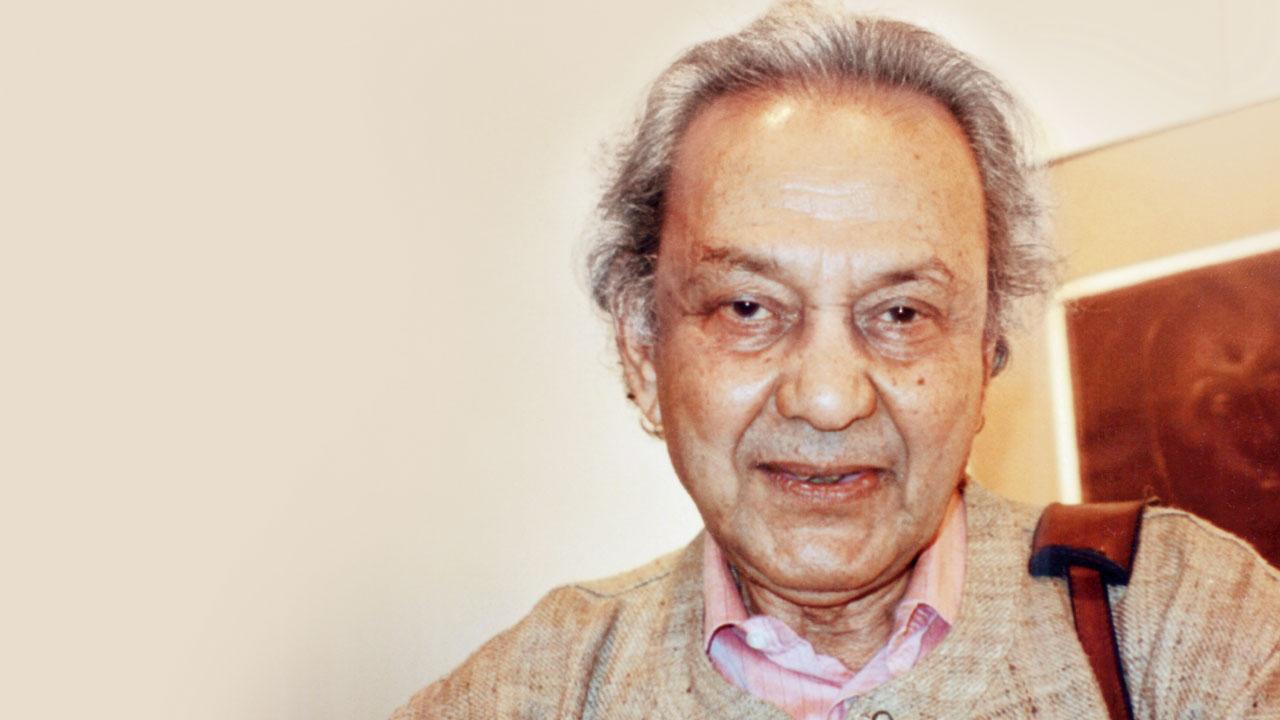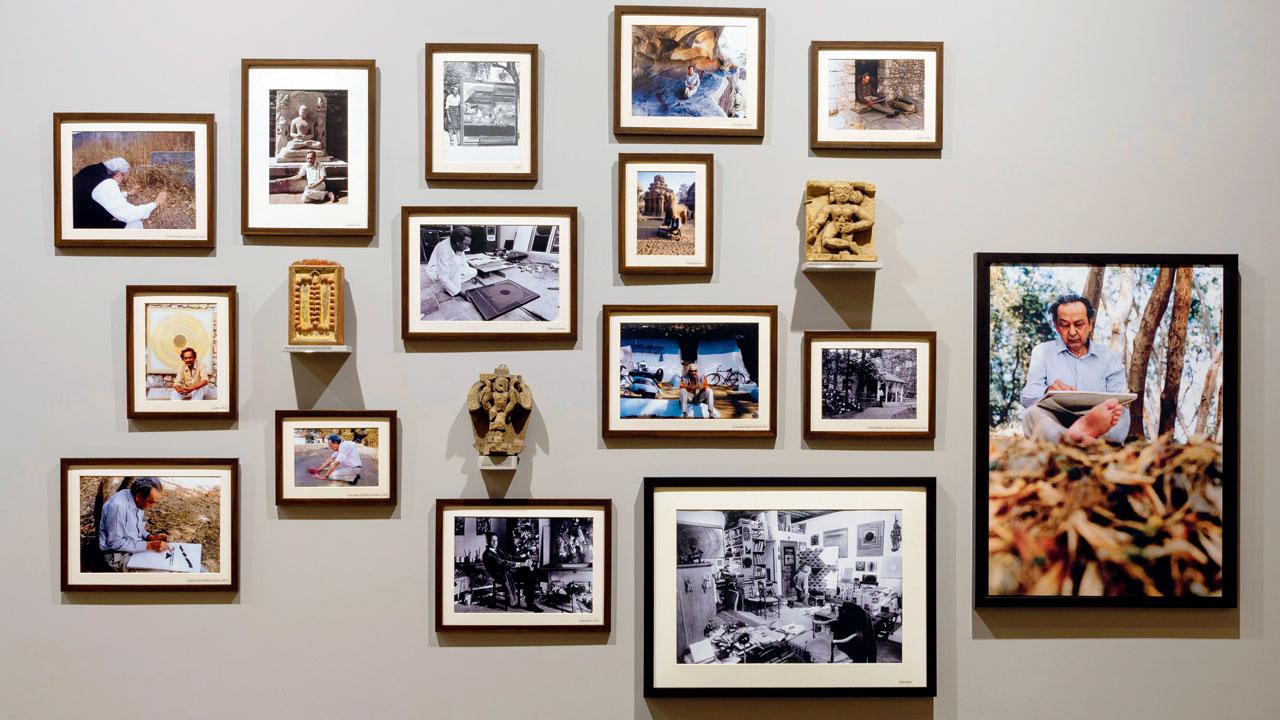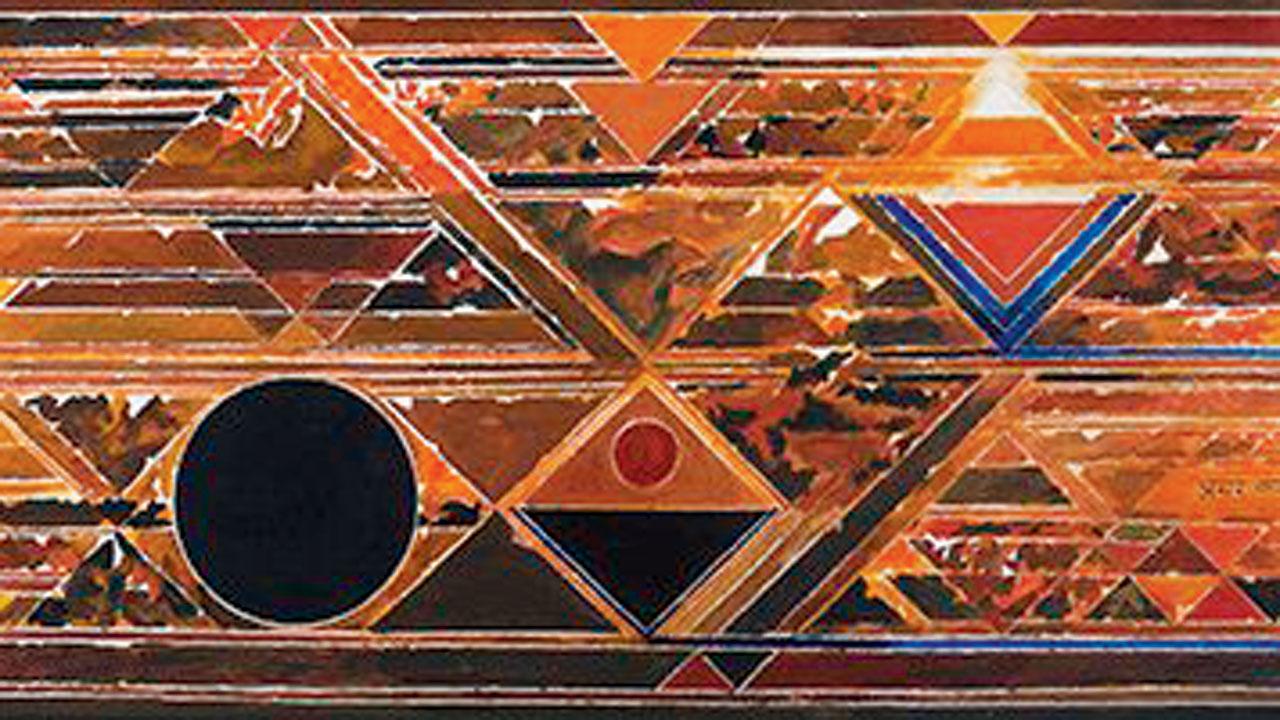CSMVS celebrates its centenary with SH Raza, in a show that traces his artistic and personal journey as a landscape artist

SH Raza photographed by Jehangir Nicholson
Over the course of his artistic journey, Sayed Haider Raza moved from painting watercolour landscapes, experimentations with Western art movements when he was in Paris, and later to geometric abstraction as he often returned to his homeland and sought to connect with the Indian forest landscape. This year, his centenary coincides with that of Chhatrapati Shivaji Maharaj Vastu Sangrahalaya (CSMVS). To celebrate his oeuvre, Jehangir Nicholson Art Foundation’s (JNAF) exhibition Zamin: Homelands traces his journey through his idea of belonging and experiences of migration evident in his work as a landscape and diaspora artist in pursuit of a modern Indian visual language.
ADVERTISEMENT

SH Raza’s photographs, brushes and palette. Pics courtesy/Jehangir Nicholson Art Foundation, Mumbai
Curator of the show, Puja Vaish, tells us, “This exhibition traces Raza’s personal journey and explores his landscapes through a conception of land and the places that held meaning for him in shaping his world view; and his landscapes in connection with ideas of nature, social and cultural environment, and nationhood — as a conception of place, displacement and belonging.”

SH Raza, Amar Kantak, 2000. Pic/Sangita Jindal Collection
Most of the works showcased are from the 1960s to the ‘70s. The works are not displayed chronologically, instead their order brings out the resonance between the paintings from different periods, and so you can witness the shift in the portrayal of the same landscape. Vaish notes, “Raza was aware of his position as an Indian artist.” She explains that as a young artist at the cusp of India’s independence, he carried with him, as did his contemporaries, the hope and aspiration of a new nation and the mobility it afforded. And this included being at par with global art movements where these artists felt the need to define Indian art.

Genesis 1996,acrylic on canvas
This was also a time when ideas that were distilled in his later works were born. A recurring and iconic motif in Raza’s abstract work is the bindu that is representational of various associations such as dark, light, seed, meditation, reverberation, the sun, world and cosmos. Abstraction, a Western form, offered Raza the space to infuse in it Eastern philosophy, mysticism, and spirituality. Charged with ancient and sacred concepts, his works emanate a type of energy. Vaish says, “Raza infused meanings and energy into his landscape.” She continues that the artist approaches the landscape almost as if it were a pilgrimage. Along with the experiences of belonging and migration imbibed in his work, the bindu — a meditative form — seems only fitting for a seeking artist.

SH Raza’s, 1971
The show includes 35 paintings in a multi-partnership between the museum, JNAF, Art Musings and The Raza Foundation. It also includes photographs of Raza, his letters, brushes and palette for a holistic view of the artist’s life of migration, the social realities of his time alongside his artistic journey.
Till: July 31
At: 10.15 am to 6 pm; Walkthrough on June 11 at 3 pm
At: Jehangir Nicholson Art Foundation, CSMVS, Mahatma Gandhi Road
Cost: Rs 100
 Subscribe today by clicking the link and stay updated with the latest news!" Click here!
Subscribe today by clicking the link and stay updated with the latest news!" Click here!












